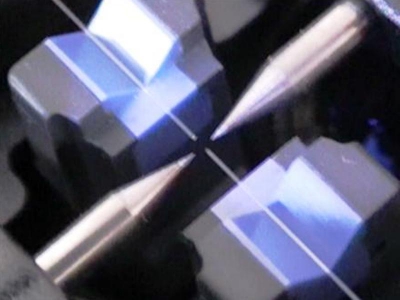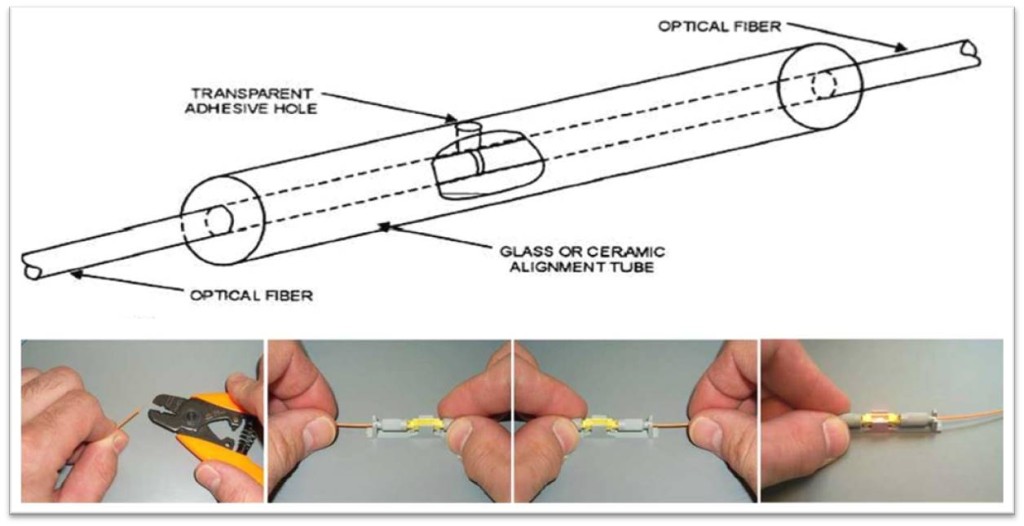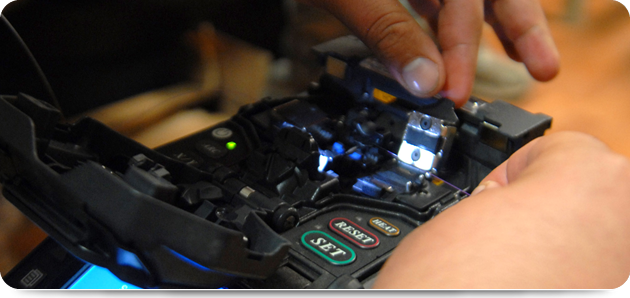A few days ago, I have been a bit of interest in the fiber optic splicing work after I communicating with some fiber optic splicing engineers. Happen to have an product learning opportunity to learn the Fusion Splicer in these two days, I have read some references about it and today I am going to share some knowledge about fiber optic splicing in this paper. If you are just beginning to do the fiber splicing work, this paper may give some information to chose which technique best fits your economic and performance objectives for your long-term goals in this field.
What Is Fiber Optic Splicing
The most intuitive understanding of fiber optic splicing is joining two fiber optic cables together using a technology. Compared to connectorization, fiber optic cable fusion splicing provides the lowest-loss connection so that it always the preferred method when the cable runs are too long for a single length of fiber or when joining two different types of fiber cable together. In addition, fiber optic splicing is also used to restore fiber optic cables when a buried cable is accidentally severed.
There are two optical fiber splicing methods which are available for permanent joining of two optical fibers:
Fusion splicing – Insertion loss < 0.1dB
Mechanical splicing – Insertion loss <0.3 – 0.5dB
By looking at the data above, we can know that both fiber optic splicing methods could provide much lower insertion loss compared to fiber connectors or terminators.
Mechanical Splicing Method vs Fusion Splicing Method
Mechanical Splice
Mechanical splice is a device for fiber optic cable splicing. It is designed to hold the two fiber ends in a precisely aligned position and reduce loss and reflection with a transparent gel or optical adhesive between the fibers that matches the optical properties of the glass.
Fusion Splice
Fusion splice uses an electric arc or heat to weld two fiber-optic cables together which can produce a continuous connection between the fibers enabling very low loss light transmission.
Which is better?
In general, the initial investment of a mechanical splice seems much lower than a fusion splice. But the splice component itself, which includes a precision alignment mechanism, is more expensive than the simple protection sleeve needed by a fusion splice. For the performance, mechanical splice generally has higher loss and greater reflectance than fusion splice. Additionally, fusion splice is used primarily with single mode fiber while mechanical splice works with both single and multi-mode fiber.
Nowadays, many companies in this industry, such as the telecom or CCTV, invest in fusion splicers for their long distance singlemode networks, but have still use mechanical splicer for shorter, local cable runs. But as signal loss and reflection are minor concerns for most LAN applications, LAN industry has the choice of either method. Therefore, what the best is the suitable, you should choose a best suitable splicer according to your item.
Fiber Optic Splicing Procedure(Fusion Splicing)
The splicing process begins by preparing each fiber end for fusion. We should firstly strip the outer jackets, polymer coating and so on to leave only bare fiber. And then a thorough cleaning of cable is needed. After cleaning, cables should be precisely cleaved to form smooth, perpendicular end faces. When everything was ready, you could place the fiber into the guides in the fusion splicing machine and clamp it in place. Repeat the above steps for the other fiber to be spliced. Here, we begin to run the splicer. Choose the proper program for fusion splicing, the fiber types being spliced. And then uses an electrical arc or heat to melt the fibers, permanently welding the two fiber ends together. The detail splicing processes could see the following video.
Warm Tips
- Thoroughly and frequently clean your splicing tools
- Properly maintain and operate your cleaver
- Fusion parameters must be adjusted minimally and methodically (fusion splicing only)



